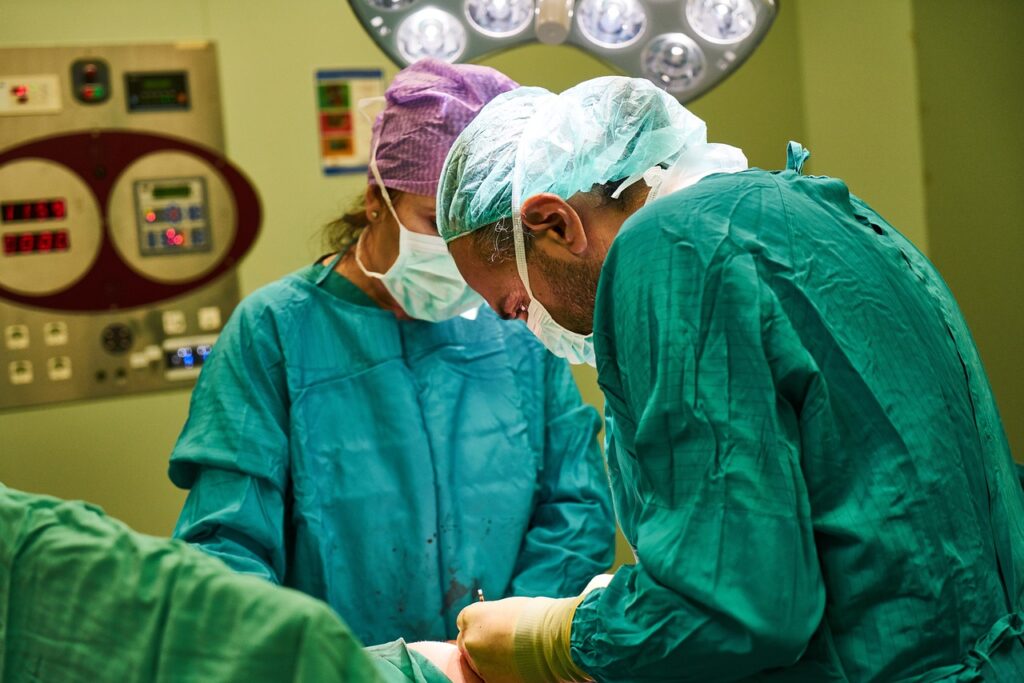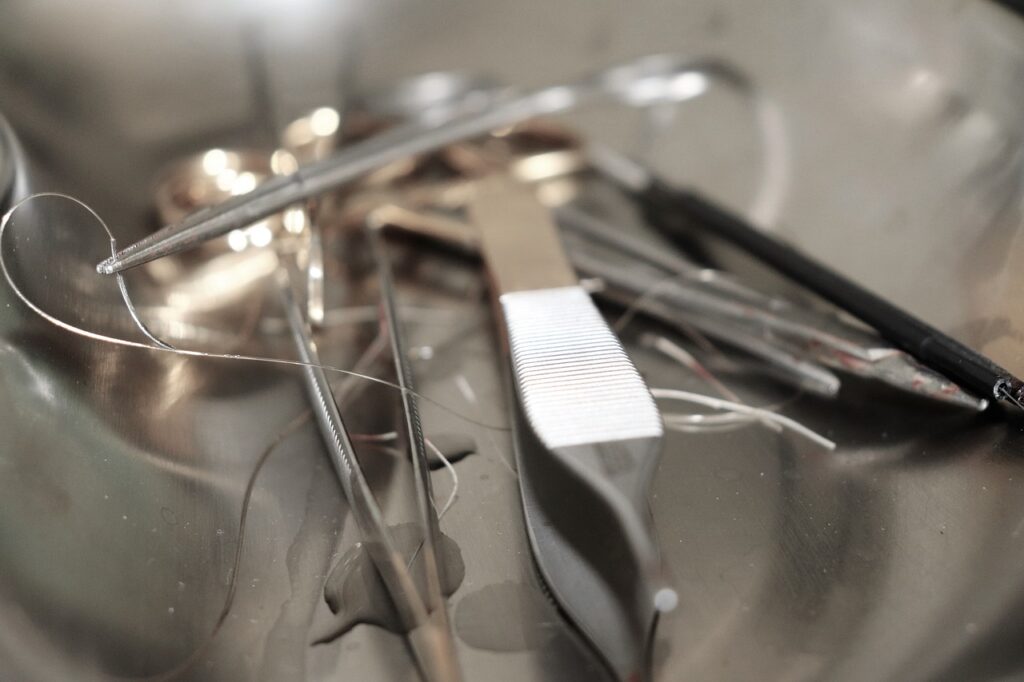Introduction to CABG and its Significance in the Medical Field
Every year, thousands of patients undergo a procedure that could potentially save their lives—Coronary Artery Bypass Grafting, or CABG. This complex surgery is critical for treating coronary artery disease, which remains one of the leading causes of death worldwide. For health professionals, understanding CABG’s intricacies is vital in delivering superior patient care and outcomes. In this blog, we’ll explore CABG, its medical significance, the surgical procedure itself, and recent advancements that promise to improve patient experiences.
Detailed Explanation of What CABG Stands For and Its Medical Definition

CABG stands for Coronary Artery Bypass Grafting. It is a type of open-heart surgery designed to improve blood flow to the heart by bypassing clogged arteries. The procedure involves taking a healthy blood vessel from another part of the body and grafting it onto the blocked coronary arteries. This creates a new pathway for oxygen-rich blood to reach the heart muscle, mitigating symptoms like chest pain and reducing the risk of heart attacks. Understanding this procedure is crucial for health professionals, as it allows them to better explain the surgery to patients and address any concerns they might have.
The Procedure of a CABG Surgery
Pre-Operation
Before a CABG surgery, patients undergo a thorough evaluation to assess their overall health and the severity of their coronary artery disease. This includes diagnostic tests like ECG, echocardiograms, TEE, and coronary angiography. Health professionals must ensure patients are well-informed about the procedure, potential risks, and post-operative recovery. Pre-operative discussions focus on lifestyle changes and medication adjustments to optimize patient outcomes.
Operation
During the CABG operation, patients are placed under general anesthesia. The surgeon makes an incision in the chest to access the heart. A heart-lung machine may be used to circulate blood while the heart is temporarily stopped. The surgeon then harvests a healthy blood vessel, often from the leg or chest, and grafts it onto the blocked coronary arteries. Depending on the number of blockages, multiple grafts may be performed in one surgery. Health professionals play a crucial role in monitoring the patient’s vitals and ensuring the surgical team has everything they need.
Post-Operation
After the surgery, patients are moved to the intensive care unit for close monitoring. Health professionals monitor vital signs, manage pain, and administer medications to prevent infection and blood clots. Patients are encouraged to begin gentle movements as soon as possible to promote circulation and recovery. Education on lifestyle changes, such as diet and exercise, is also provided to help patients maintain a healthy heart post-surgery.
Indications for a CABG
CABG is typically recommended for patients with severe coronary artery disease who have not responded to other treatments like medication or angioplasty. Candidates often include those with multiple blocked coronary arteries, particularly if the left main coronary artery is affected. Health professionals must assess the patient’s overall health, comorbidities, and individual risks before recommending CABG. This personalized approach ensures that each patient receives the most appropriate treatment based on their unique condition.
Potential Risks and Complications Associated with a CABG Surgery

Like any major surgery, CABG carries potential risks and complications. These can include infection, bleeding, heart attack, or stroke. Long-term issues may involve graft failure or arrhythmias. Health professionals must counsel patients on these risks, ensuring they are well-informed before consenting to the procedure. Additionally, meticulous post-operative care and monitoring can help mitigate these risks, leading to better outcomes for patients. Recognizing early warning signs of complications and initiating prompt interventions are critical components of post-operative care.
Recent Advancements in CABG Procedures and Technologies
The field of cardiothoracic surgery is continually evolving, and CABG is no exception. Minimally invasive techniques, such as robotic-assisted surgery, have emerged as alternatives to traditional open-heart procedures. These advancements offer shorter recovery times and reduced scarring for patients. Additionally, advances in imaging technology have enhanced the pre-operative planning and precision of CABG surgeries. Health professionals must stay updated on these innovations to provide patients with the most cutting-edge and effective treatments available.
CABG and Occupational Therapy
Occupational therapy plays a significant role in the recovery process after CABG surgery. Therapists work with patients to regain strength, improve mobility, and return to daily activities. They create individualized exercise plans to enhance cardiovascular health and facilitate a smooth transition back to normal life. Health professionals collaborate closely with occupational therapists to ensure a comprehensive and multidisciplinary approach to patient recovery. In the acute setting, occupational therapists work with patients on ADLs. An OT plan of care may include retraining a patient to perform functional mobility from the bed to chair progressing to the bathroom to perform grooming, dressing, toileting and bathing while maintaining sternal precautions. This collaboration maximizes the benefits of rehabilitation and supports patients in achieving their recovery goals.
Conclusion
In conclusion, CABG remains a vital procedure in the treatment of coronary artery disease. Its success depends heavily on the knowledge and expertise of health professionals involved throughout the patient’s journey. By understanding the intricacies of CABG, health professionals can provide informed guidance, compassionate care, and support to patients undergoing this life-saving surgery. Continuous education and staying abreast of advancements in the field are essential for optimizing patient outcomes and enhancing the quality of care.
The information provided on this website is for general informational purposes only. It is not intended as, nor should it be considered, professional or medical advice. Always consult a professional regarding your specific medical issue.
Frequently Asked Questions
What is CABG?
CABG stands for Coronary Artery Bypass Grafting, a surgical procedure used to treat coronary artery disease by rerouting blood around blocked arteries.
Who is a candidate for CABG?
Candidates for CABG are typically patients with severe coronary artery disease, multiple blocked arteries, or those who haven’t responded to other treatments like medication or angioplasty.
What are the risks of CABG surgery?
Risks include infection, bleeding, heart attack, stroke, and long-term complications such as graft failure or arrhythmias.
How does occupational therapy aid in CABG recovery?
Occupational therapy helps CABG patients regain strength, improve mobility, and return to daily activities through individualized exercise plans and rehabilitation programs.
What are the recent advancements in CABG procedures?
Recent advancements include minimally invasive techniques, robotic-assisted surgery, and enhanced imaging technologies that improve precision and recovery outcomes.
References
- AHA/ACC Task Force Members. (2018). 2018 AHA/ACC Guidelines for Coronary Artery Bypass Grafting: A Report of the American College of Cardiology/American Heart Association Task Force on Clinical Practice Guidelines. Journal of the American College of Cardiology, 72(8), e391-e444. DOI: [10.1016/j.jacc.2018.08.021](https://doi.org/10.1016/j.jacc.2018.08.021)
- Kern, M. J., & L, R. E. (2020). Minimally Invasive Coronary Artery Bypass Grafting: Current Concepts and Techniques. Annals of Cardiothoracic Surgery, 9(1), 82-90. DOI: [10.21037/acs.2019.11.01](https://doi.org/10.21037/acs.2019.11.01)
- American Occupational Therapy Association. (2019). Occupational Therapy’s Role in Cardiac Rehabilitation. American Journal of Occupational Therapy, 73(5), 7305205030p1-7305205030p9. DOI: [10.5014/ajot.2019.031905](https://doi.org/10.5014/ajot.2019.031905)
- Head, S. J., et al. (2021). Current Practices and Future Directions in CABG Surgery: Reviewing the Evidence for Off-Pump Techniques. Circulation, 143(18), e814-e816. DOI: [10.1161/CIRCULATIONAHA.120.051146](https://doi.org/10.1161/CIRCULATIONAHA.120.051146)
- Khalpey, Z., et al. (2022). Post-operative Care in Cardiac Surgery: Improved Outcomes through Multidisciplinary Approaches. Journal of Cardiac Surgery, 37(3), 654-661. DOI: 10.1111/jocs.16200
Recently Featured OT Insider Posts
Sternal Precautions for Cardiac Patients Post-CABG in OT
Spinal Precautions: Essential Guidelines for Occupational Therapy
Transforming Lives with the PEO Model in Occupational Therapy
Understanding WFL (Within Functional Limits) in Occupational Therapy
Flowing Through the KAWA Model in Occupational Therapy
Boosting Patient Autonomy with the Modified Barthel Index
Mastering the Stand Pivot Transfer (SPT) in Occupational Therapy
Step Up in Occupational Therapy with Ankle-Foot Orthoses (AFOs)
